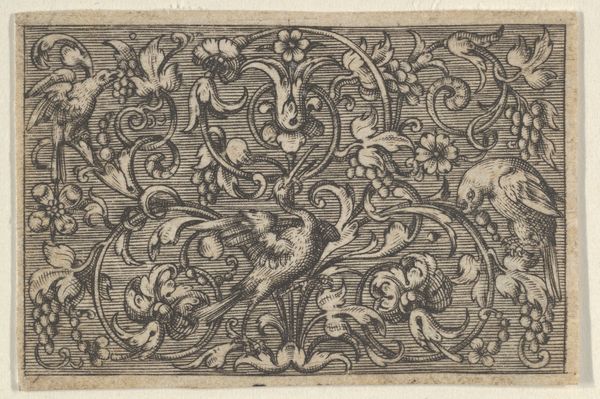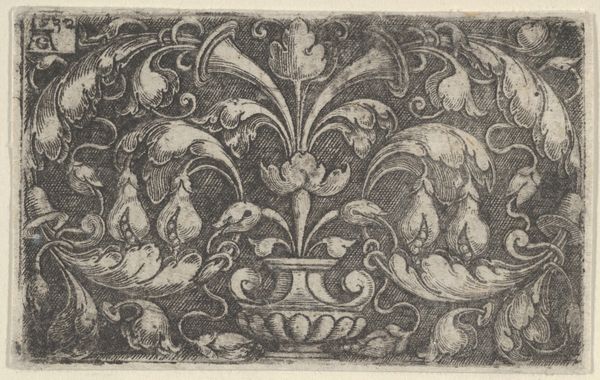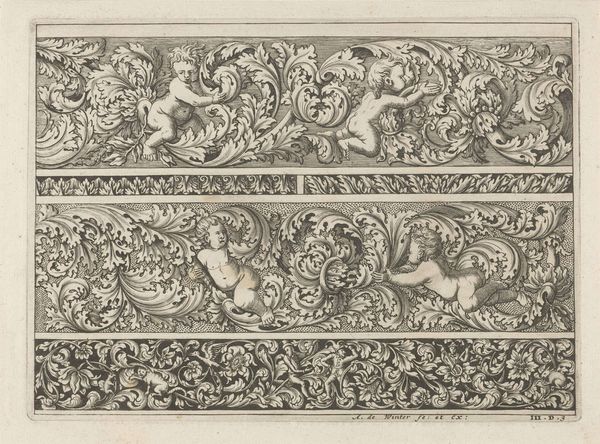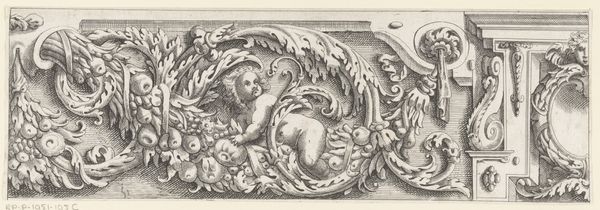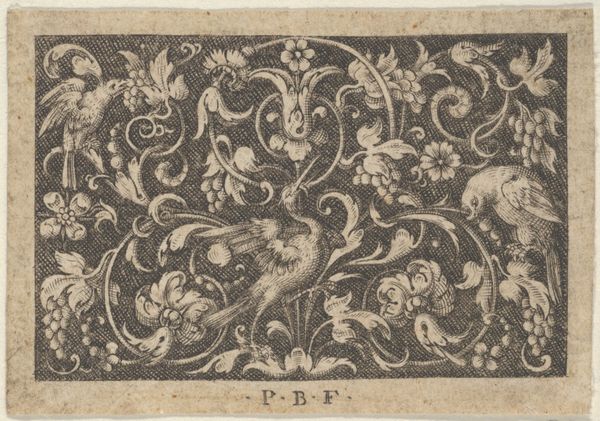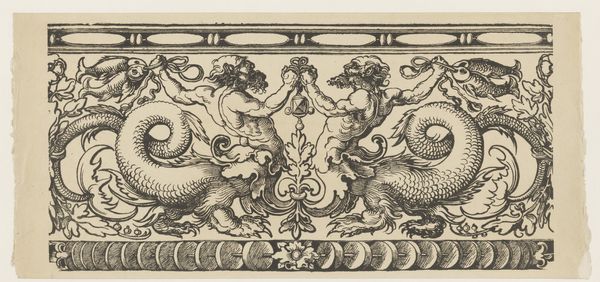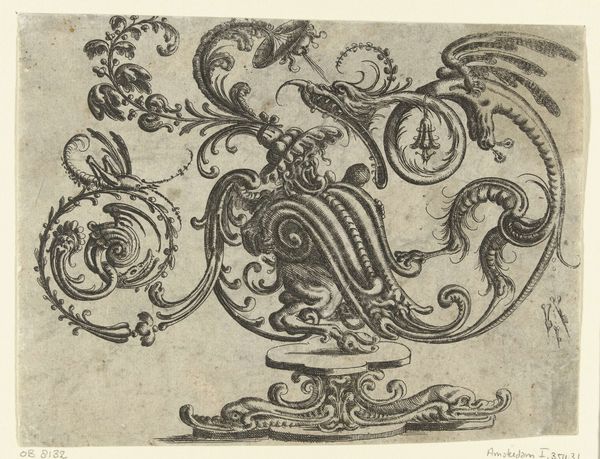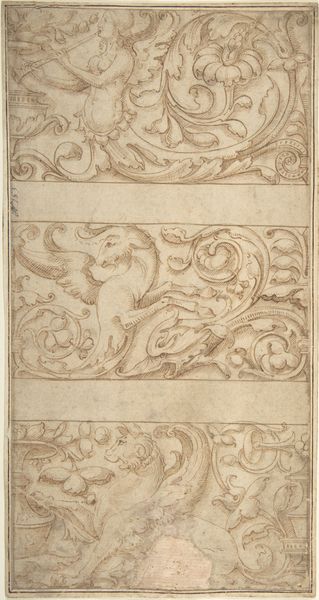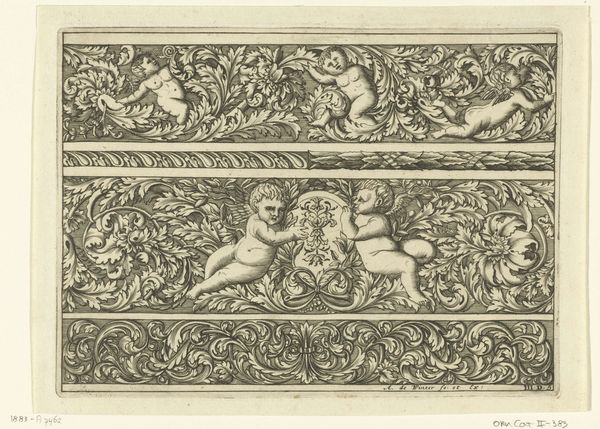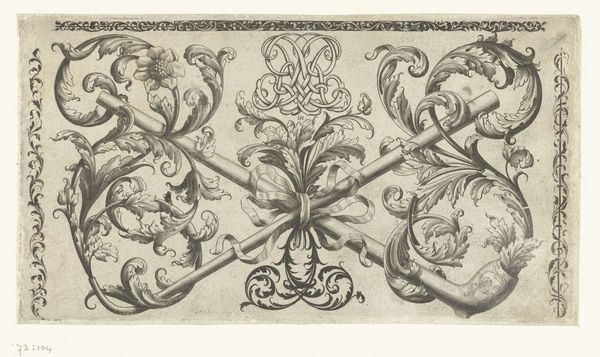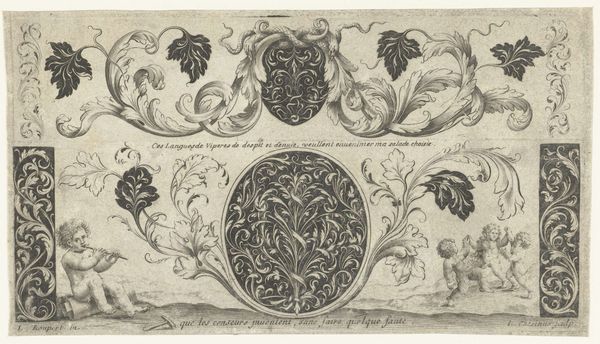
Horizontal Panel with a Bird, from Varii Generis Opera Aurifabris Necessaria 1595 - 1605
0:00
0:00
drawing, print, metal, woodcut, engraving
#
drawing
#
baroque
#
pen drawing
# print
#
metal
#
bird
#
fruit
#
pen-ink sketch
#
woodcut
#
engraving
Dimensions: Sheet: 1 3/8 × 2 in. (3.5 × 5.1 cm)
Copyright: Public Domain
Curator: The delicate detail in this horizontal panel immediately strikes me; there’s a poised sense of restrained energy. Editor: Indeed. We’re looking at "Horizontal Panel with a Bird, from Varii Generis Opera Aurifabris Necessaria," an engraving and woodcut print made between 1595 and 1605 by Paul Birckenhultz, now housed here at the Metropolitan Museum. Curator: It's quite small, roughly the size of my hand. The composition has a balanced, almost symmetrical arrangement, built around the central figure of the bird. The way Birckenhultz uses line to create depth and texture is truly masterful. Note the consistent use of hatching to imply shading. Editor: And considering the title, we must discuss its material function. These ornamental prints were not meant for display, but rather circulated as models for metalworkers. These were artisans creating functional objects like jewelry, weaponry or tableware. It shows a demand for intricate craftsmanship. Curator: A critical component is the baroque ornamentation – foliage, fruits, and flowing lines intertwine, embodying the period’s embrace of complexity and embellishment. How the bird becomes just another element woven into the greater composition speaks volumes about decorative priorities of the time. Editor: That tension between nature and artifice really highlights how makers thought about production at the time. Was it art or craft? How much does labor matter versus inspiration? Prints like this collapse that artificial high and low divide by aiming to empower diverse practices. Curator: Certainly. The symbolism is worth noting, too. The bird, possibly a finch, often signifies joy or freedom, encased in ornamentation denoting opulence and controlled presentation. One is literally feeding off the other. Editor: By understanding that these objects are part of a circuit of production and consumption, we appreciate the art's true social purpose. It wasn't just aesthetic; it was integral to broader material culture. Curator: This print invites close inspection, not merely for its beauty, but for a dialogue it starts. Editor: I agree. Seeing through to its means of creation and consumption brings depth and relevance, even now.
Comments
No comments
Be the first to comment and join the conversation on the ultimate creative platform.


